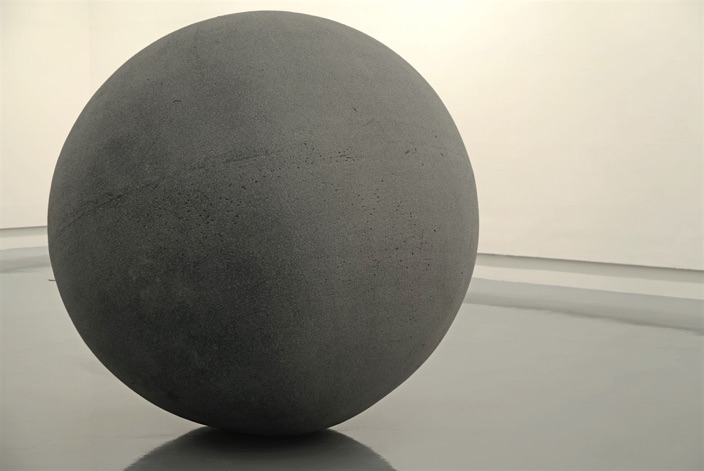Interview for No One River Flows exhibition
Q: Ron Hanson (WHITE FUNGUS)
A: Kuo-Wei LIN
Q: You are producing a “walking sculpture” for this exhibition which will involve several people who don’t necessarily have any artistic training or skills. How does this notion of “social sculpture” differ from traditional sculpture? How much control do you expect to have over your materials?
A: Walking is one of the fundamental self-controlled human activities; there is a need, a desire or a goal which bring us to walk in and out of a space. According to “Asphalt bokeh”, I invite people to experience rolling an asphalt coating sphere in street. It’s similar to driving a vehicle; when you are on the road, the street circumstance demands huge concentration and you are forced to react at any instant; you need to draw attention on collective’s harmony and personal walking rhythm. In this work, I’m not only seeking the social sculpture aspect but a “détournement” to address passer-by, to use asphalt as a paradox or camouflage on the street. People lead it to an unknown “parkour” and taking over the risk.
Q: In your work you often attempt to locate the ex- traordinary in the ordinary or seemingly mundane. Walking is something we do everyday, obviously, unless we are unable to walk, and it is an activity we can easily pass little thought to. Why have you chosen to focus on this particular activity for your work?
A: To distinguish the extraordinary from ordinary routine is part of my art practice, to find out all the critical points in relation to my daily life. I’m attracted by walking rhythm and motorbikes in the rush hours in Taipei. Living in a crowded city can change your human rela- tion as well as the space perception. Michel de Certeau mentioned: “The walker is never fully determined by the plans of organising bodies, taking shortcuts in spite of the strategic grid of the streets.” I found his remark very interesting. I would like to measure those possible inter- sections between “non fully determined zone” and “ways of operating” by observing a process of making art.
Q: You often explore notions of the “public” and “public space” in your art. As a Taiwanese artist, you re-located to Paris in 2000 and resided in Germany and Taiwan afterwards. How has this experience of living abroad and returning to Taiwan influenced your thinking towards this notion of the public sphere?
A: The experience of living aboard has a strong impact to my practice. I feel more a foreigner or an alien both in Germany and Taiwan. I’m familiar with but also extremely aware of my surrounding; I accumulate and stratify those experiences to absorb and convert things in ordinary life. Being aboard as a foreigner artist who goes off and comes back to himself is to look from a distance with his own life, and to be able to overlap, juxtapose various living experiences, repositioning in and out of social order.
Concerning my project in Kuandu in public space, I’m interested in the topographical reading of the Kuandu mountains and the coexistence between the artificial and natural. My attempt is not to reduce or simplify the specificity of site, but to configure and interrupt the site (street) with sharable, translatable intervention. There is a knowledge production to reinvestigate with audience. I want to place people into the core of this exercise. Besides, I see there is a give-and-take relationship existing in different public spaces; even in nature, questions of value, economy and time are complex but universal. Artists interact with those issues and lineup an unconventional life mode through art practice; it leads to a distribution of a sensible relationship, to take things and bring them back to the context again.


